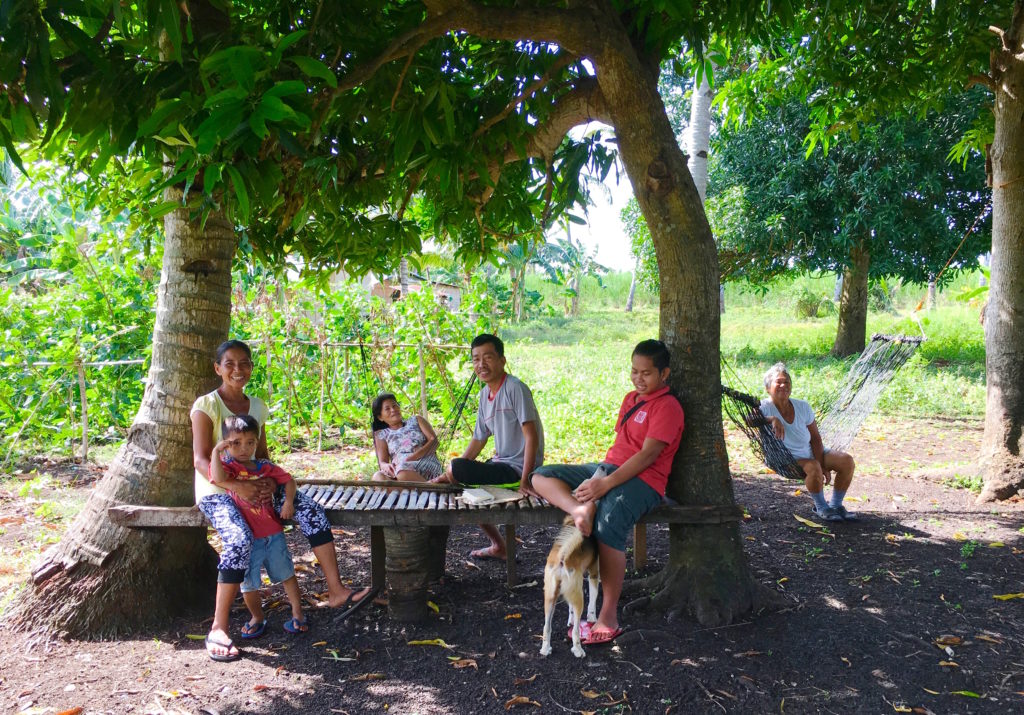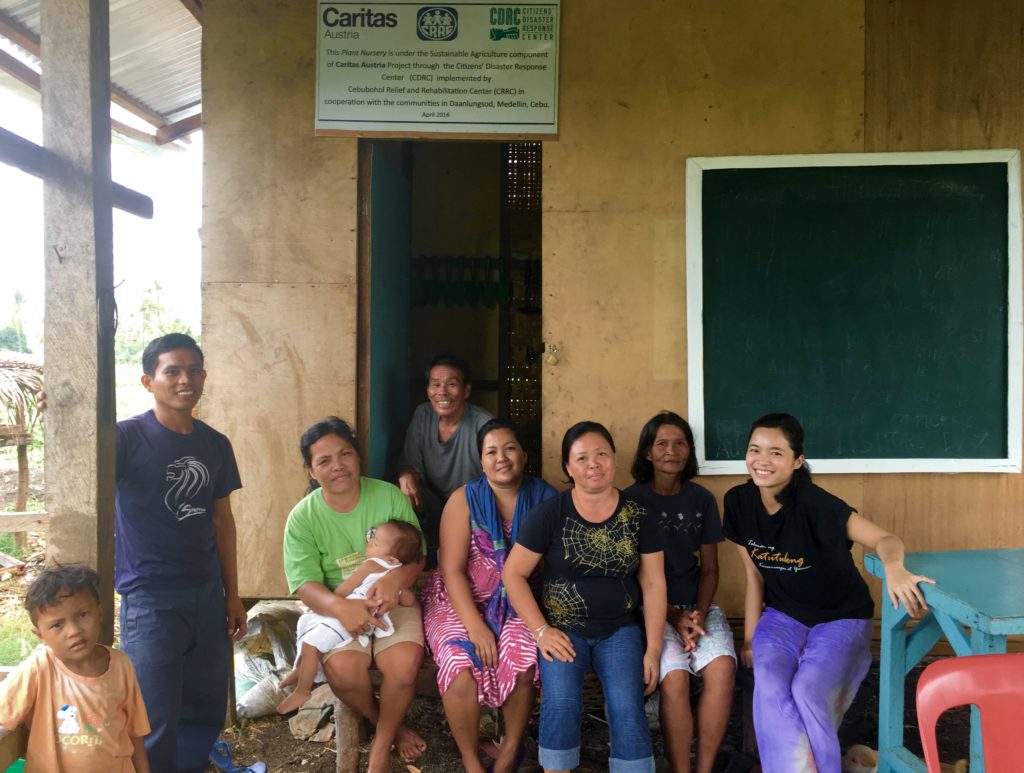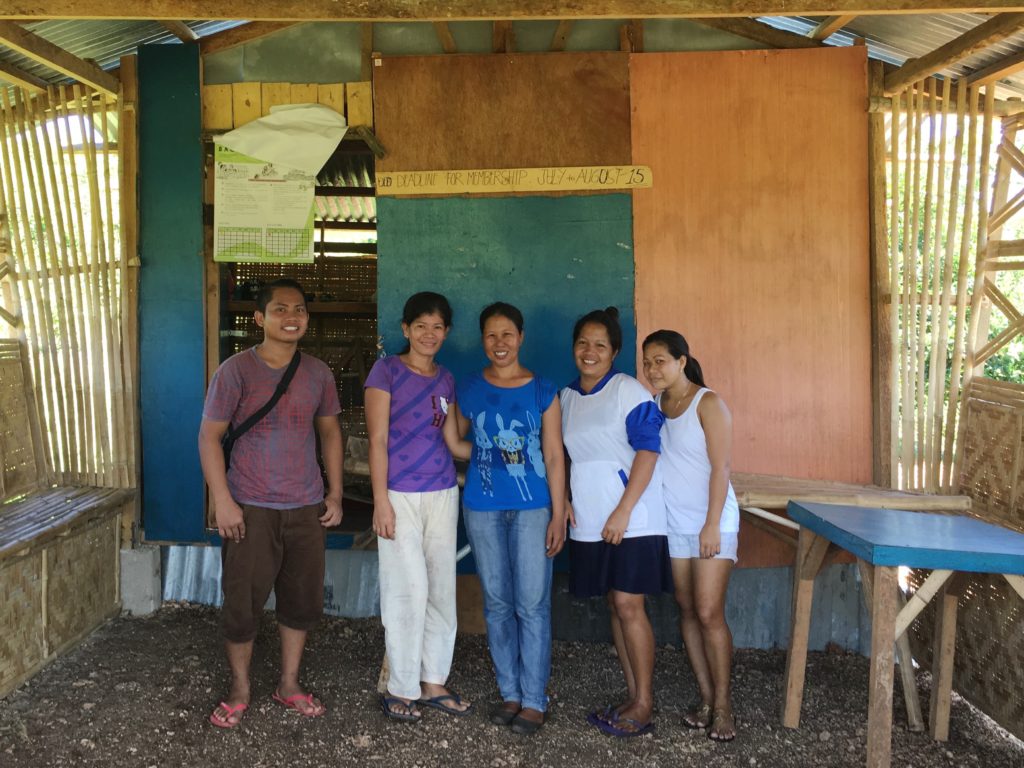Chaya Ocampo Go
8 November 2016
To commemorate the third year anniversary of super typhoon Yolanda, this article features the stories of women community leaders and survivors in the island of Cebu, and their continuing partnership with CDRC’s regional member organization, Cebu-Bohol Relief and Rehabilitation Centre (CRRC). Through their lives’ work we can understand how #climate justice is a feminist issue —and how women leaders from communities most impacted by #climate change, although often marginalized in formal systems of governance, legislation and decision making processes, are in fact at the core of collective survival work.
Farmers, barangay health workers, and disaster preparedness leaders
Far outside of Yolanda’s ‘ground zero’ lie other Visayan islands that were also ravaged by the super typhoon on the 8th of November 2013. For Cebu, its northern region was most devastated; these areas include Bantayan Island and the coastal municipalities of Daanbantayan and Medellin. In response to the aftermath, CRRC opened a satellite office in Medellin in addition to its headquarters in Cebu City to be closer to its partner communities in need. In the course of my brief fieldwork to report on ongoing initiatives in the area in August 2016, I came to know many women survivors whose longstanding leadership forms their communities’ lifelines.
Vast tracks of land in Medellin are covered by sugarcane plantations. The family who took me in lived deep in these hectares filled with tall tough grasses; they have been working in these sugarcane fields for generations. Lucia Venturan—who I affectionately call ‘Nay Lucia—was my proud host. Beaming with what seemed an endless enthusiasm, she delightfully shared about her work as the treasurer for both the Comon Farmers’ Association and the sitio’s Disaster Preparedness Committee (DPC), which were organized with CRRC’s assistance after Yolanda. She diligently attends workshops on a wide variety of topics including sustainable farming, rearing livestock, and accounting to help her in the management of their farmers’ cooperative. She also leads preparations in her sitio for incoming storms. This is all in addition to the daily household work she takes charge of in caring for her family.
Lucia Venturan (at far left) with her son and other DPC leaders and CRRC staff – Sitio Comon, Brgy. Daanglungsod (Photo by author – August 2016)
‘Nay Lucia is the daughter of sugarcane workers; she entered the fields at a young age, and knows the stinging pain of scorching sun and a heavy load on one’s back. She took me walking through the tubuhan (sugarcane plantations). “It was in there where my heart burst in pain!”, she motioned to the fields, tearfully recalling the humiliation of a woman worker who could not match the amount most men harvest. The pressure is always high to harvest more to earn bigger. ‘Nay Lucia’s one body feeds and protects many: her children clung to her at the rage of Yolanda, and she is in charge of meeting her sitio’s needs when a storm comes and leaves.
The women of Sitio Landing similarly shoulder multiple responsibilities of care. Seated inside their nursery—doubling as a hut for both germinating vegetable seeds and an informal daycare for their children—the officers of MALACAFA (Mahayahay, Landing and Cansaong Farmers and Fisherfolks Association) carried nursing infants and chatted eagerly about their endless work as barangay health workers. In exasperation, they mulled over the persisting needs of friends who were single mothers; they worried about a neighbor who was pregnant again, and discussed who else lacked reproductive health services, or whose child needed assistance in accessing special education. These are daily gendered issues all too rife in their community, now taken up in a “time of cloudbursts” (“uso na ang buhawi!”), where torrential rainstorms were getting more frequent. For the officers of MALACAFA, Erlinda Baring, Lily Cananga, and Geserie Baring and the rest of their team, survival was necessarily fought for together and across multiple fronts.
The author (at the far right) with the core DPC leadership at Sitio Landing – Sitio Landing, Brgy. Daanglungsod (Photo by author – August 2016)
Amy Gimenez Duran migrated to Cebu from Quezon Province. Upon meeting me—“another Tagala!”, she exclaimed—she overflowed with stories about their lives after Yolanda. In Quezon she worked as hired labour; in Cebu she and her husband work on her aunt’s own farm. “Iba talaga ang may sariling lupa.” Land tenure was key to improving one’s life, she told me. She is the president of both the TBMFA (Tangke, Baring, and Melagro Farmers Association) and Sitio Tangke’s DPC, and was proud to showcase other women farmers’ abundant harvest across the mountain slopes. Food security is vital to any survivor—of a super typhoon or of longstanding poverty. When I asked TBMFA women leaders what else they dreamed for their community, they shared how wonderful it would be if they could drive all their little children on a small vehicle to the school kilometers away. They worried of the great work such little feet had to trudge daily, as they would in running for shelter from storms.
Amy Duran (center) with other DPC leaders and CRRC staff – Sitio Tangke, Brgy. Daanglungsod (Photo by author – August 2016)
Climate Justice is a Feminist Issue
The CDRC has been responding to the needs of Yolanda survivors in the last three years, and has programs to further these post-disaster relief initiatives to address long-term rehabilitation (click here for pdf report summary-of-yolanda-early-recovery-and-rehabilitation-efforts). A feminist framework does not simply re-centre women from the margins of political action, but also insists on an intersectional approach where poverty, gendered violence, reproductive health, age, and ableism are all examined together to understand how women’s lives, bodies and labour are affected by climate change. These are all necessarily interconnected, and by unraveling these threads, root causes of vulnerabilities to disasters and how we even define and respond to such calamities will necessarily shift from reactionary charitable acts to longstanding work in solidarity for social justice.
From October 28 to November 6, 2016, the Women’s Earth and Climate Action Network (WECAN) International and the Women’s Global Call for Climate Justice are leading ten days of global mobilization to highlight the central leadership role of diverse women and girls in responding to climate impacts our communities are facing. The 2016 “Women Act for Climate Justice” campaign is called in advance of the November 2016 United Nations Framework Convention on Climate Change – COP22 Conference in Marrakech, Morocco.
This sustained series of civil actions urges world state leaders to view climate justice as a feminist issue. Just as the women survivors in Cebu exemplify through their leadership roles in their own homes and communities, women must be at the core of all climate and ecological sustainability policy, planning and implementation if we are to have more safe, equitable, just and livable futures. ##
The author is a Filipina scholar at York University and a Research Fellow for the Citizens’ Disaster Response Centre. The opinions expressed in this article are the author’s own and do not necessarily reflect the official policy or position of CDRC.




Leave a Reply